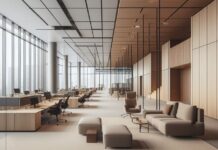As every good business owner and manager knows, a company is only ever as good as its staff. If your employees are happy, then they will be keenly productive and the company prospers. Basic math is crucially important in customer service and sales roles, but even those positions which play out behind the scenes require contented staff, who in turn for their job satisfaction remain loyal and even boost morale among their colleagues. However, employee satisfaction is not simply a result of adequate financial compensation or a big bonus every now and then. It requires an entire environment to be crafted.
Clear Goals and Balance
When it comes to the “science of happiness” expounded by Tony Hsieh, it has been proven that companies with a sense of purpose outperform competitors by 400%. However, although employees have a responsibility to adjust their own outlook to a certain extent, there are several ways business owners and managers can assist further in keeping their workforce content, without resorting to paying “lip service to concepts like trust, teamwork, and innovation”.
Control is a major factor (which pairs with its everyday impact, too). Nonetheless, setting any concept of power struggles aside, control can simply mean balance – the ability to manage work within a set schedule, without being bombarded and spiraling ever downwards into that sense of being overwhelmed by deadlines, which often happens in a world where overtime has become the norm. To this end, flexitime works in the modern workplace; even telecommuting. Enabling employees to fit their lives external to the office to life within the office is a huge step toward creating a happier working environment (indeed, the ability to work from home has been shown to improve employee satisfaction by 12%). This customization makes employees feel valued, in that they don’t have to adapt their home lives to an unrecognizable level to remain employed.
With a little time spent of organization, everyone is happy. Of course, there may occasionally be the mad “survival mode” rush to meet a deadline – that is a fact of working life – but for the most part, companies with the most satisfied employees establish and maintain a calm routine that allows for the occasional oversight anyway.
Suitable Surroundings and Sociability
The office is also so evidently key in maintaining employee satisfaction, yet too often overlooked. Gone are the days when a bland, somehow always gray, cubicle with a standard chair and desk was sufficient. Returning to the concept of control, extend that to the adaptation of the workstation. If possible, allow your workforce to bring in their own chair or other equipment, to personalize their area of the office. Not only does this put employees more at ease, but it also serves to prevent back problems or eyestrain and other similar issues come from working at a desk for many hours of the day (without even beginning to mention RSI).
Furthermore, look closer at the layout of the office. Can employees interact with each other? Neuroscientist David Siegel found the human brain to be “social organ” – is it satisfied by your firm’s office design? Does it allow for employee interaction? Just as creativity and innovation rarely come a last minute panic, so too are they hindered by a poor working environment. Your people are how you achieve your profit. Studies show that workplace design, when done right, can improve employee happiness by 33%. It goes without saying that air quality, lighting, and heating or its opposite matter too (no-one wants to sit shivering at their desk or conversely melting into a puddle beneath their chair, lit only by a flickering fluorescent tube overhead). Nonetheless, specifically the layout of the office is what has been found to matter more recently.
If you find that your business has outgrown its current office space, whether it’s because you want to move into the city or you have one too many employees in a too small environment, moving to a more appropriate office space can work wonders to your employees’ morale. If you want an office that offers more, then make the move and transition. You cannot ask your employees to work in less than fit location.
A Lesson in History
Looking back, in 1906 the first modern office opened in the Larkin Administration Building and was based on an open factory design where managers were distinguished by the quality of their desks and accessibility to the windows. This open plan layout was still favored up until the 60’s, the workforce sat in relevant sections that led through the ranks of a firm from the little man to the boss. However, in 1967, DuPont opened an office based on Bǖrolandschaft (“office landscaping”), with its employees arranged together in task-specific pods. In fact, it wasn’t until 1985 that the cubicle was born as a design concept, only implemented two years later for computer programmers who worked better with privacy and little interruption and at the tail end of the recession in 1989; these cubicles became notably smaller as firms had to downsize.
Then, in 1990, advertising agency Chiat/Day suggested the future of office design lie in “hot desking”, employees at large desks, with no personal space, and only lockers for storage and couches for comfort. By 1994, IBM took this to the next level and implemented “hoteling”, where you could reserve a desk just like a hotel room. Despite these innovations, however, by 1998 over 40 million citizens were still operating from minimized cubicles. Luckily, by 2006, the success of open plan workspaces was becoming the trend once again. Interestingly though, by 2014, many employees were complaining about hot desking and open plan spaces in general, 90% claiming higher stress levels and diminished productivity (indeed, stress and other mental health factors contribute to 13.3 million lost working days per year).
Tomorrow
As a result of this, as of 2016 it was projected that there will be a 6% increase in homeworkers in the coming years, given that open plan working yet expands in popularity, despite employee protestations (look at Apple with a 2,800 strong workforce in a single room per floor at Apple Park).
It is from these lessons in history that today’s business owners and managers can learn how best to adapt the office to suit their particular workforce and increase employee satisfaction, applying social and scheduling considerations for the ultimate happiness factor, with that touch of the personal as well.















